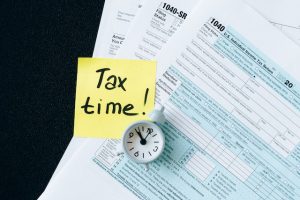This article is intended for individuals interested in the intersection of fiscal policy, borrowing data, and tax cuts. Readers will explore how governments respond to improved borrowing data by implementing tax cuts and the implications of such policies on the economy and individual finances. Introduction Enter the realm of fiscal policy and data-driven decisions guided
This article is intended for individuals interested in the intersection of fiscal policy, borrowing data, and tax cuts. Readers will explore how governments respond to improved borrowing data by implementing tax cuts and the implications of such policies on the economy and individual finances.
Introduction
Enter the realm of fiscal policy and data-driven decisions guided by the expertise of Dr. Laura Simmons, a renowned economist known for her insightful analyses of government policies. With her insights, we delve into the dynamics of fiscal policy responses to improved borrowing data, particularly focusing on the strategic implementation of tax cuts. Fiscal policy is a powerful tool that governments employ to stabilize economies, promote growth, and address economic challenges. In times of economic downturns or crises, fiscal policies can play a crucial role in shaping recovery trajectories. Two prominent strategies within fiscal policy are tax cuts and borrowing. This article explores the impact of tax cuts and borrowing data on fiscal policy response, shedding light on their effectiveness, considerations, and implications for economies.
The Role of Tax Cuts in Fiscal Policy
Tax cuts are a common fiscal policy tool used to stimulate economic activity by putting more money in consumers’ pockets and incentivizing spending. When governments reduce taxes, individuals and businesses have higher disposable income, which can lead to increased consumption, investment, and overall economic growth.
During economic downturns, tax cuts can serve as a countermeasure to declining consumer spending and business investment. By implementing targeted tax reductions, governments aim to stimulate demand, boost consumer confidence, and encourage businesses to expand operations.

Photo by Nataliya Vaitkevich: https://www.pexels.com/photo/tax-documents-on-black-table-6863259/
Considerations and Effectiveness
The effectiveness of tax cuts as a fiscal policy response depends on several factors:
- Targeted vs. Broad Tax Cuts: Targeted tax cuts, which focus on specific sectors or income groups, can have a more direct impact on demand and consumption. Broad-based cuts, while offering wider relief, might not yield the same immediate boost to economic activity.
- Timing: The timing of tax cuts is crucial. Swift implementation during economic downturns can provide the necessary jolt to consumer spending and business investment.
- Multiplier Effect: Tax cuts can have a multiplier effect, where each dollar of tax reduction results in more than one dollar of increased economic output. However, the actual multiplier effect can vary based on the economic context and consumer behavior.
- Long-Term Impact: While tax cuts can stimulate short-term growth, their long-term impact depends on factors such as the size of the deficit created and the sustainability of government finances.
Borrowing Data and Its Impact on Fiscal Policy
Borrowing is another essential component of fiscal policy. Governments often borrow funds to finance spending initiatives, stimulate economic activity, or cover budget deficits. Borrowing data provides insights into a government’s financial health and its ability to manage debt.
When governments borrow to finance fiscal policy measures, it’s important to consider the following aspects:
- Interest Rates: Borrowing costs are influenced by prevailing interest rates. Governments may time borrowing to take advantage of lower interest rates, minimizing the burden of interest payments.
- Debt Sustainability: Borrowing increases government debt, which should be sustainable over the long term. High levels of debt relative to GDP can lead to financial instability and increased borrowing costs.
- Investor Confidence: Borrowing data can reflect investor confidence in a government’s fiscal policies. Sound fiscal management can enhance investor trust and lead to favorable borrowing terms.
- Fiscal Responsibility: Governments must strike a balance between borrowing for productive investments that stimulate growth and avoiding excessive debt accumulation that could hinder future economic prospects.
Photo by Mikhail Nilov: https://www.pexels.com/photo/a-woman-in-black-suit-explaining-details-of-the-document-7735691/
Balancing Tax Cuts and Borrowing
The interaction between tax cuts and borrowing data highlights the delicate balancing act governments must undertake in crafting effective fiscal policies:
- Tax Cut Financing: Implementing tax cuts requires careful consideration of funding sources. Governments can use existing revenues, reprioritize expenditures, or engage in borrowing to finance tax relief measures.
- Borrowing for Investment: Borrowing can be used to fund infrastructure projects, education, and other investments that yield long-term economic benefits. Such initiatives contribute to sustainable economic growth and can offset the impact of borrowing on government debt.
- Debt Management: Governments must manage borrowing data to ensure that debt remains at manageable levels. Prudent fiscal management involves evaluating the impact of borrowing on interest payments and assessing the long-term fiscal trajectory.
Main Goal of the Article and How It Achieves It
The main goal of this article is to analyze the fiscal policy response to improved borrowing data through tax cuts. The article achieves this by discussing the role of borrowing data in fiscal decisions, explaining the mechanism of tax cuts, exploring the economic implications across sectors, and examining how tax cuts affect individual financial scenarios.
Unique Value and New Ideas
This article provides unique value by delving into the specific relationship between improved borrowing data and tax cuts as a fiscal response. It goes beyond general discussions to provide insights into the impact on various sectors and individual finances. The article introduces the concept of considering tax cuts in the context of personal financial planning.
Fictional Introduction of Knowledge Source
Meet Dr. Laura Simmons, a distinguished economist acclaimed for her expertise in fiscal policy dynamics. Drawing from her extensive research and analytical skills, Dr. Simmons offers invaluable insights into the intricate interplay between improved borrowing data, tax cuts, and their far-reaching economic implications.
Conclusion
As we conclude our exploration of fiscal policy responses and their correlation with improved borrowing data and tax cuts, readers are equipped with a comprehensive understanding of the strategic decisions governments make to drive economic growth. Under the guidance of Dr. Laura Simmons, individuals can comprehend the potential impact on their personal financial scenarios and make informed decisions that align with larger fiscal trends. Remember, the world of fiscal policy is a dynamic landscape where data-driven decisions pave the way for economic prosperity.


















Leave a Comment
Your email address will not be published. Required fields are marked with *